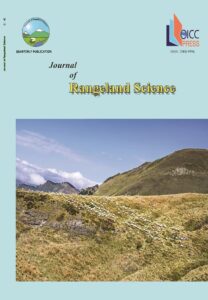Assessing Sensitivity to Desertification Using the Fuzzy Overlay Method in Mashhad, Iran
Authors
Abstract
In this research, we used six MODIS remote sensing products to evaluate the vulnerability to desertification in Mashhad, Iran in 2020. The Enhanced Vegetation Index (EVI), Vegetation Condition Index (VCI), Salinity Index (SI), Synthetized Drought Index (SDI), Temperature Condition Index (TCI), and precipitation were considered in May, 2020 when vegetation growth reaches its maximum size. Data layers were standardized using the Fuzzy Transform Function and scaled using the Analytical Hierarchy Process (AHP). Regarding TCI, VCI, and SDI, the greatest proportion of the area fell under the no drought to mild drought category indicating a lower risk of desertification. However, the Synthetized Desertification Index (SDI) was mainly distributed around the moderate and mild classes (~39%). The results of the EVI index also indicated that most of the area had a suitable vegetation density and low risk of desertification. As for the SI index, ~98% happened under the low salinity risk. Based on the results of the Analytical Hierarchy Process (AHP) method, precipitation (0.25), VCI (0.25), EVI (0.18), and SDI (0.13) obtained the greatest weights. The final vulnerability score ranged between 0.29 and 0.63. The results showed that the greatest parts of the area belong to the moderate risk (~68%) and high risk (30.1) classes of desertification. The highest values were obtained in the eastern and southeastern parts of the area with the lowest level of vegetation density, and high-temperature indices. Naturally, the elevations received the lowest values (~0.29) showing an increasing gradient towards the middle plain. The comparison between the results and the ground truth data indicated high compatibility (kappa value of >0.70). Mashhad City as the major population centre of the area is located in the low-risk category; therefore, desertification doesn’t seem to be threatening the city at the moment.




